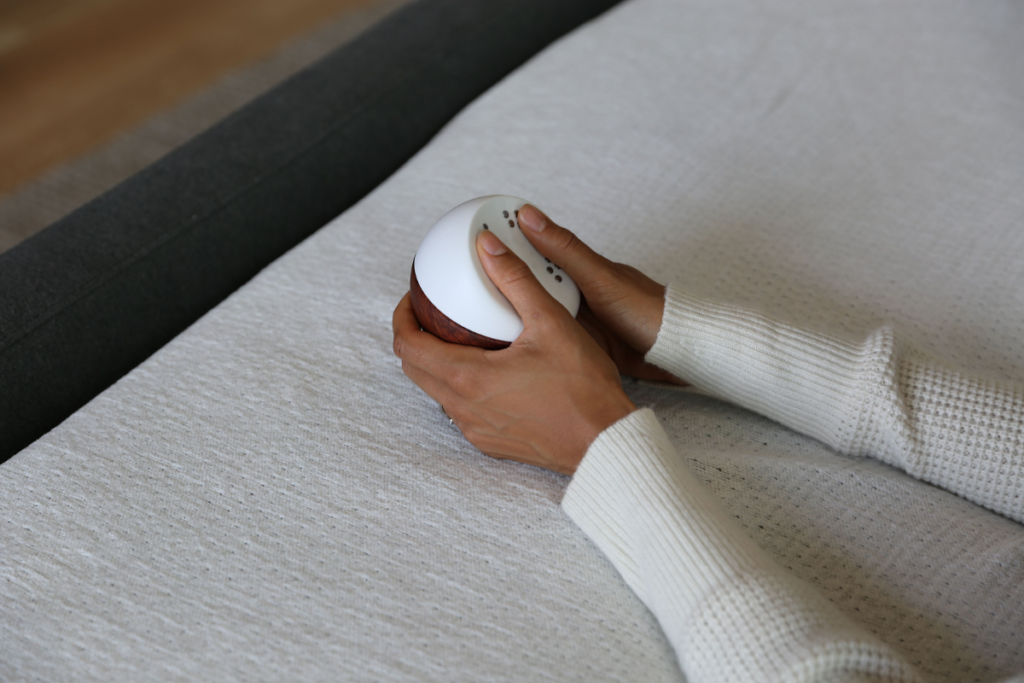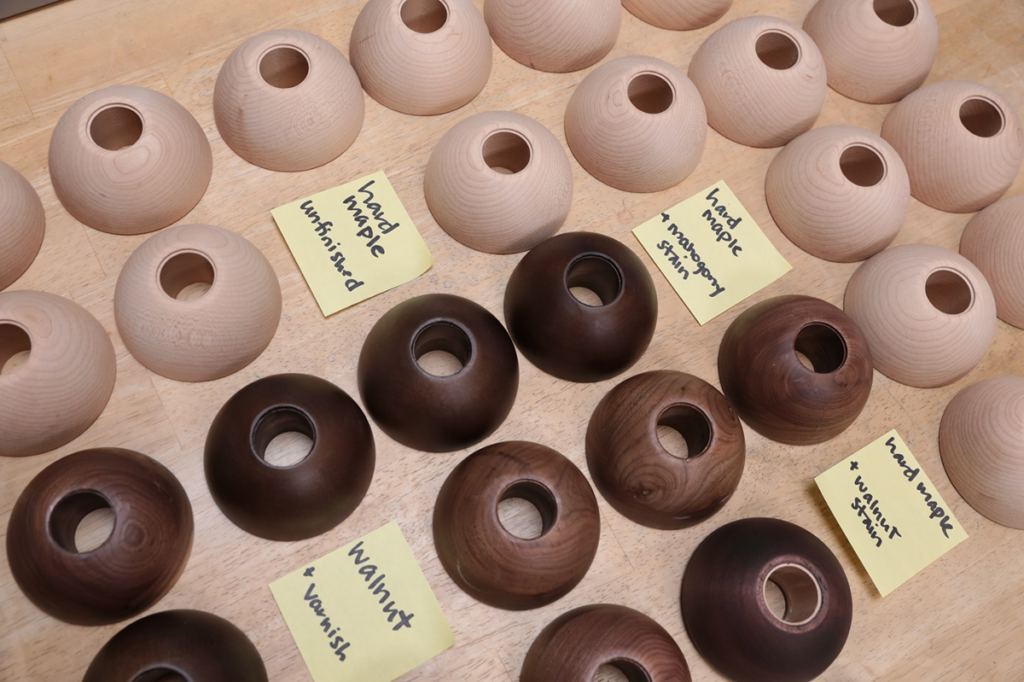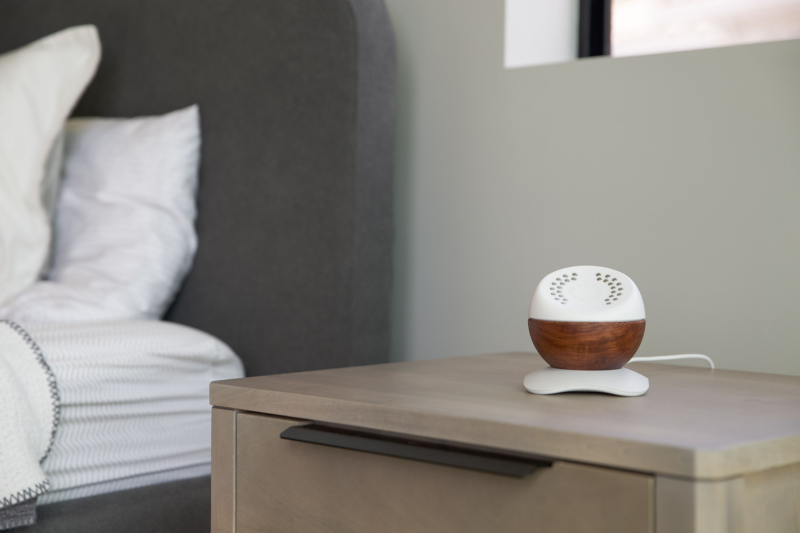
A product design case study on valuable solutions to hard problems
Core made a big announcement today about an important fundraising milestone: They raised a $4m seed round from Spero Ventures, Bolt, and others. This accomplishment reflects the wonderful team they’ve built, the beautifully immersive product they’ve developed, and most importantly, the impact they’re having on people’s lives.
In her article, Kate McAndrew sat down with Core’s CEO Sarah McDevitt to find out what the business journey has been like so far. In this post, I wanted to take a moment to give an in-depth look at a few of the design details that make their product experience so special.
A Uniquely Immersive Meditation Experience

As you may have noticed, meditation is having something of a moment right now.
Companies are expanding their view of health care to include mental health as well as physical, and people are trying to set aside more time out of their busy lives for self-care, often giving meditation a try. For newcomers and adepts alike, meditation can be a challenging practice to establish, and an even harder one to maintain. There are lots of products out there from classes to apps to books that can guide a practice, but it’s still challenging to build a routine and know how you’re improving over time.

The experience of using Core’s mediation trainer is something entirely new. The Core app hosts immersive soundscapes and guided sessions that are anchored and focused by holding a physical device. Why do you want a handheld device for a mental exercise like meditation? If you’ve been following along with the research, you know it’s not just a mental activity. Meditation engages your parasympathetic nervous system to have real and measurable physiological effects that aid in your ability to healthily deal with stress and anxiety.
Designed with this in mind, Core’s device engages your body in several elegant ways. It provides subtle haptic cues like a slow rhythmic vibration to help guide your breathing or a chime-like pulse to focus your attention, each synchronized to the audio content. It also measures your body’s response over the course of each session by measuring your pulse and heart rate variability (HRV). This lets you know how much time you spent in a deeply calm state or when you got distracted and recovered successfully. Core not only helps you meditate more deeply, it provides feedback to encourage and improve your practice.
Core’s entire team has a meditation practice and two are even certified instructors, so they’ve tastefully executed these features in a way that authentically supports a meditation experience. These are practitioners building experiences for fellow practitioners, not just folks opportunistically pushing technology solutions to a so-hot-right-now wellness space.
As I’ve written about before, behind every elegant product design are valuable solutions to difficult problems. Core is no exception.
You gotta get your hands on this
The industrial design of this product and how it supports an attractive, tactile experience was obviously a priority. Its form is intended to invite interaction and focus attention in your hand.

You may notice that the device is almost — but not quite — spherical. The orb-like shape lends a sense of unity and simplicity but pushing the form slightly away from being perfectly spherical gives it a more natural character.

For each iteration of form, the team conducted corresponding ergonomic studies to see how users naturally held the object and where they tended to place their fingers. This helped settle on the final form and also locate the electrical contacts used to record an electrocardiograph on the device.
“Refining the ergonomics over and over again has been challenging. Humans are all quite different, and it turns out that sub-millimeter changes have a dramatic effect on people’s comfort levels,” Bashir Ziady, VP of Engineering at Core told me. “We had at least 23 different versions of the top surface of the device. You find what works by iterating with physical prototypes, learning to use, then learning to hate the prototype, distilling the learnings into the next version, and trying again. Overall, I’m really excited by where we landed — it is comfortable for almost everyone.”

The choice to use wood as a material was also a challenge but important in supporting a natural and tactile experience. Each base is turned down from a solid block of wood and finished with several CNC drilling and milling operations. A final hand polish, staining, and clear coat step highlight the one-of-a-kind grain pattern on each base.


Wood presents unique technical challenges, especially when it needs to precisely mate with more common engineering materials — injection-molded plastic in this case. All materials expand and contract with changes in ambient temperature or humidity to a different degree, and wood does so non-uniformly relative to the direction of its grain structure (more swell perpendicular to the grain). The mechanical design and assembly tolerances have to carefully take this into account.
The end result is a device that I’m happy to have on my nightstand at home.

Feeling is believing
Core’s meditation sessions have beautifully designed audio environments that are synchronized with tactile vibrations coming from inside the device. You might be listening to an instructor guiding you through controlled breathing exercises and have gentle waves of vibration guiding your cadence. Or a forest soundscape with bell-like tones that you can feel in your palms helping you refocus at certain intervals.

Choosing the right implementation of this intimate touchpoint took careful design and even more testing. There are many types of vibration actuators from rotational motors with eccentric weights, to linear motors, to piezo speakers, to other custom magnetics.
Choosing between them required weighing just as many subjective requirements as objective tech specs. How strong is it on full blast? How subtle can it be? How quickly does it respond to ramping up and down? How much does this vary part to part? Does it feel like a smooth constant buzz or discrete vibrations? Does it feel like it couples through the enclosure differently? Core’s device is often used in quiet environments, so minimizing the audible noise of the motor was also an important consideration.
Most of these qualitative characteristics can’t be judged by reading a datasheet. You need to get your hands on samples and experiment at length with different electrical drive profiles. After downselecting to a few promising parts, the team also needed to evaluate the motor performance across many samples to judge part-to-part variance as well as performance over the lifetime of the motor.

Each haptic feedback type has hand-tuned motor profiles that can be adapted on the fly. The hardware and software architecture allows the device to store the tuned vibration sequences in firmware and trigger them programmatically using the timebase of the audio content.
The team developed content production tools to fit with common digital audio workstations to allow the haptic cues to be tuned, arranged, and tested in real-time alongside the audio content of a guided session.
The result is a natural bridge between the product’s physical experience and carefully authored audio content.
Self-awareness in data
If you meditate regularly, it can be hard to know if you’re getting better over time. You can track how often you are meditating but it is difficult to get feedback on the quality of your sessions. Core’s meditation trainer logs the observable effect meditation has on your autonomic nervous system by recording an electrocardiogram containing rich data like your heart rate variability and more.
Interestingly your heart rate becomes much more regular (variability goes down) when you are stressed and tends to loosen up (become more variable) when you are relaxed. This is a key signal for the amount of time you spend in a deeply meditative state or to indicate that you’ve refocused from a natural wandering of the mind.

Technically this is done with an electrocardiogram (ECG) sensor in the device that measures small electrical signals on your skin that are triggered by your cardiovascular nervous system every heartbeat. The dot patterns on the top of the device are stainless steel electrodes that make electrical contact between your body and the chip inside the device.
The electrodes are manufactured using a metal injection molding (MIM) process to achieve the complex surface the industrial design requires. MIM processes aren’t especially unusual — they are used in many things like orthodontic appliances, automotive parts, and Apple’s Lightning connectors — but it’s certainly a challenge to source and control quality as a startup. Other alternative methods exist but are either too expensive (like CNC milling because of tool time) or not suitable to the application (casting would have rough edges without significant post-processing).

Alongside the record of your sessions in the app, you can add a short text entry to journal your thoughts and motivations for the day. This moment of whitespace to give room for reflection is a personal favorite.
The more time you spend with your meditation trainer, the more it gets to understand patterns in your body’s response and guide your improvement. I can’t wait to see what the future has in store for using this data to recommend different techniques, meditation schedules, and content personalization.
As a startup, you can’t do everything — you have to do the right things.
Developing any product, especially at a startup, is an exercise in prioritization. There are too many compelling features and hard problems to tackle all at once. You better chose the right ones, but if you only take the easiest path — minimal risks, nothing scary — you probably won’t end up with a great product. The key is having the restraint to say no to most things in order to buy yourself the time to pour the blood, sweat, and tears into the really valuable few. It always takes more work and iteration that you except. I think Core has done a great job of just that and I’m eager to see where they go from here.
If you want to experience things for yourself, you’re in luck! Signups to join the waitlist for the meditation trainer are open now. Core also has key roles open to join the team in product, hardware and software engineering, data science, marketing, and content.
Bolt invests at the intersection of the digital and physical world.
